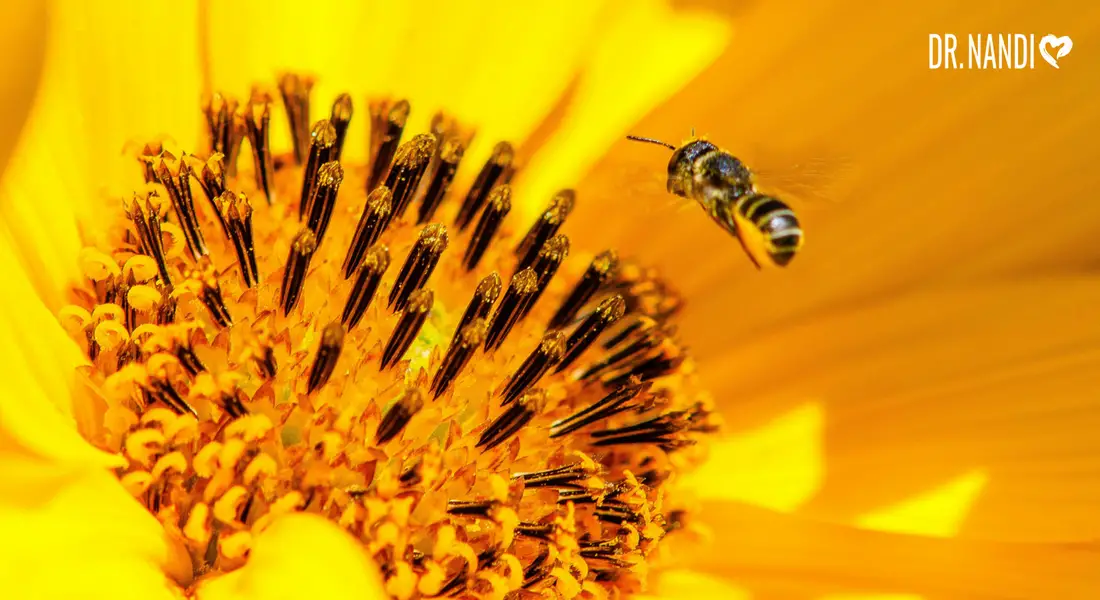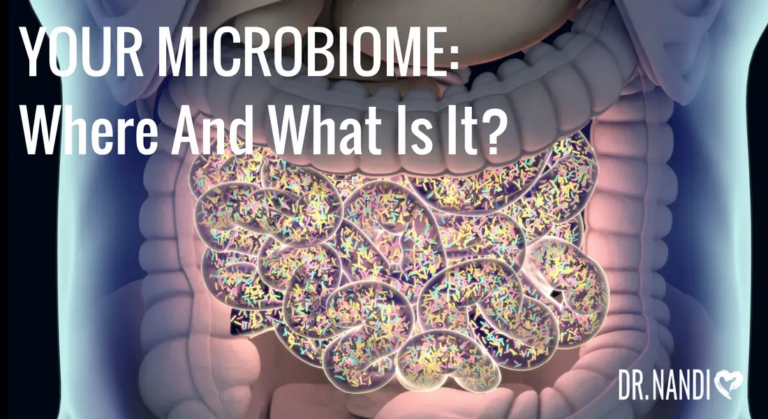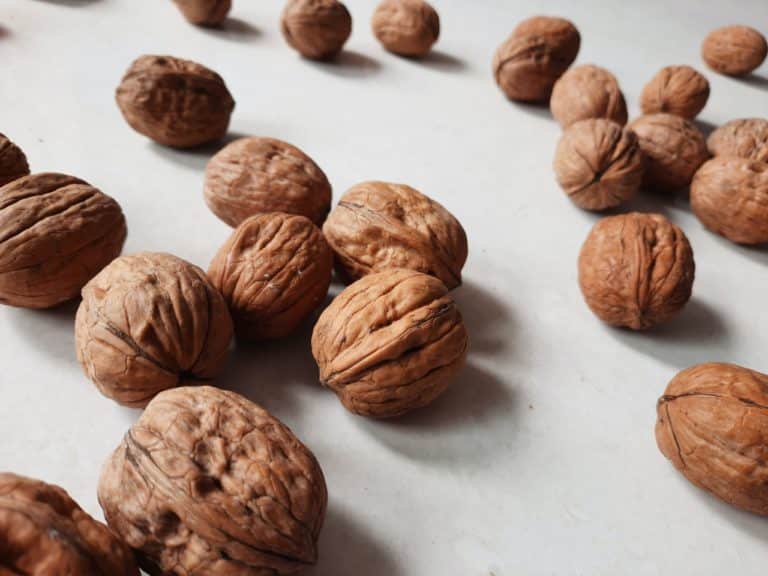Bee pollen contains vitamins, minerals, lipids, and carbohydrates and is almost 40% protein.
Bees collect pollen that sticks to their bodies when flying from flower to flower, dispersed onto other plants they visit.
In addition to getting carried from flower to flower, bees collect the powder and take it back to the hive.
Once back in the hive, the bees add enzymes to prevent decomposition and then digest it to turn it into honey. Bee pollen is a granule called bee bread that is pollen covered in honey. Honey is made from pollen that has already been digested, so it lasts longer and feeds the hive.
Nutritional Benefits of Bee Pollen
There are many uses of bee pollen. One of the health benefits of bee pollen is it’s rich in many vitamins, minerals, enzymes, amino acids, proteins, lipids, fatty acids, carotenoids, and bioflavonoids, making it an antifungal, antibacterial, and antiviral agent with many health benefits!
Bee pollen contains all the needed nutrients to live. Scientists fed mice a 100% bee pollen diet, and there were no signs of malnutrition. It also includes elements that modern science has not been able to recreate.
The nutritional composition of bee pollen consists of vitamins A, C, D, E, and B complex, free amino acids, rutin, and about 40% protein.
Can Bee Pollen Aid With Weight Loss?
Bee pollen’s low-calorie content is an easy food source to incorporate into your calorie-controlled diet. A 2 tsp serving of bee pollen has only 4 grams of sugar and 40 calories.
Bee pollen granules have a sweet crunch, explaining why including bee pollen is such an easy and filling snack in between meals and effectively kills random food cravings.
It also offers large amounts of nutrients, such as fiber, that can aid digestion and weight loss. A 2 tsp serving of bee pollen is just 2% of the calorie intake in the average 2,000-calorie diet but contains 5% of the daily fiber needed for men and 8% for women.
Low G.I. foods, like bee pollen, have been linked to fast and effective fat loss. In general, it is known that when insulin levels in the body are low, the body burns more fat more quickly.
Rita Elkins, MH, states that “bee pollens’ primary role in weight control appears to be its ability to stabilize a faulty metabolism.” Bee pollen has been known to almost switch back on a slowing metabolism and accelerates it. Bee pollen is rich in lecithin, which helps to break down fats.
Is Bee Pollen Safe for Diabetics?
Research shows us that the faster food enters the blood, the more significant the increase in insulin is to follow. There are three main parts of all low glycemic foods: the scale used to measure how fast food enters the blood, which are protein, fiber, and good fats—these three lower the G.I. of foods and control insulin levels in the body.
Bee pollen happens to have a very high protein content and contains 14 fatty acids. Both lead to lower ratings on the G.I. scale.
Research has found that the nutrients in bee pollen help in improving blood circulation. The antioxidants within bee pollen help regulate blood and reduce blood sugar levels and high cholesterol.
Taking bee pollen could help eliminate diabetes-related kidney issues, like nephropathy or kidney failure.
Who Should Take It and How?
Please note that consuming bee pollen can cause serious side effects for people allergic to it so please check with your doctor before using it. Pregnant and breastfeeding women should also not consume it.
Bee pollen comes in capsules, powders, and raw granules and can be mixed into drinks, smoothies, or salads, taken as a supplement in between meals, or as a meal. It can also be made into all sorts of snacks and recipes!
A popular method is to take 1 Tbsp 30 minutes before meals to help regulate blood sugar and fill up.
Another method is to use it as a meal replacement. Take multiple tablespoons of water as a meal replacement, usually for breakfast or lunch. (This is something you must build up to slowly).
Bee pollen has been known to cause a burst of energy in some people, so if you plan on taking it, try it out around breakfast or lunch instead of before bed.
References:
- Honey, Propolis, and Royal Jelly: A Comprehensive Review of Their Biological Actions and Health Benefits – PMC (nih.gov)
- Beneficial impacts of bee pollen in animal production, reproduction and health – Abdelnour – 2019 – Journal of Animal Physiology and Animal Nutrition – Wiley Online Library
- Bee pollen: Benefits, uses, side effects, and more (medicalnewstoday.com)
- What Is Bee Pollen Good For? 10 Health Benefits, Side Effects (medicinenet.com)
- Bee Collected Pollen and Bee Bread: Bioactive Constituents and Health Benefits – PubMed (nih.gov)
- Uncertainties continue around use of bee pollen | OSF HealthCare
- Bee Pollen Benefits and Side Effects (webmd.com)
- Health Benefits of Honey and Bee Pollen | El Camino Health
- Honey – Mayo Clinic
- Bee Pollen – Health Encyclopedia – University of Rochester Medical Center




















